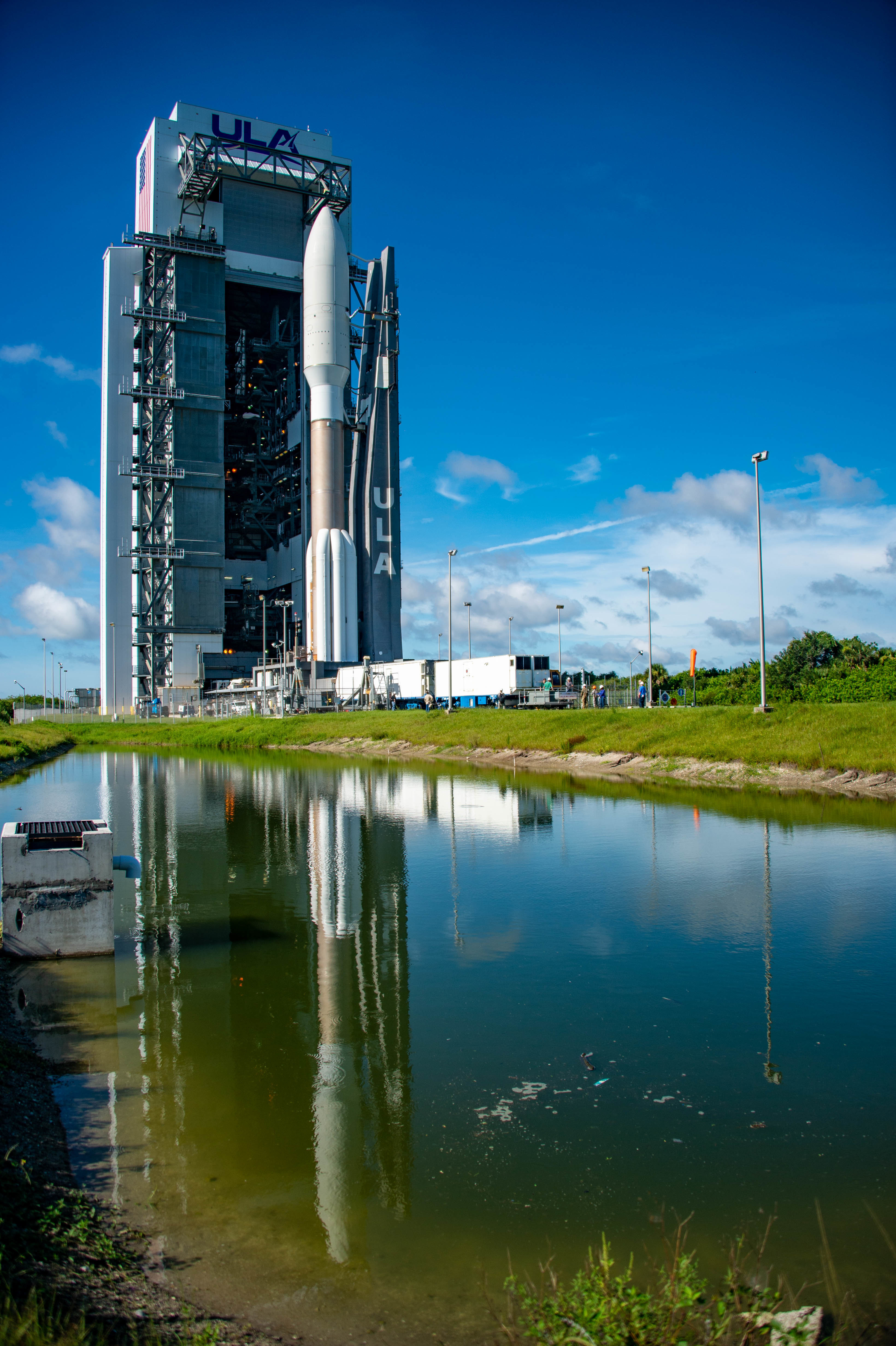SUNNYVALE, Calif. –
August 8 marked a new milestone in the Defense Contract Management Agency and Air Force partnership as the fifth Advanced Extreme High Frequency satellite was successfully launched into space. The satellite is part of the Department of Defense’s Joint Service Satellite Communications System, and marks the end of DCMA’s role on the AEHF-5.
“As news of the satellite’s successful launch broke, the team here at DCMA Lockheed Martin Sunnyvale could finally celebrate the completion,” said Rita Bruce, the AEHF program integrator who leads DCMA’s multifunctional program support team. “Leading up to the launch, DCMA personnel collaborated with aerospace partners in an effort that paid off. The satellite’s successful launch meant that everyone could breathe easier.”
The launch was initially scheduled for June 27, but technical issues with the launch vehicle delayed it more than a month. In order to make everything come together, DCMA worked closely with Lockheed Martin, Astrotech, United Launch Alliance, Air Force’s 45th Space Wing, and 5th Space Launch Squadron to overcome challenges and deliver the final product.
“This is another example of those partnerships working as they should,” said Bruce.
DCMA’s main role during Lockheed Martin Space’s manufacture, delivery, and launch of the satellite was to provide acquisition insight. This included engagement in quality assurance, engineering and analysis, supply chain surveillance, contract administration, as well as other aspects of the acquisition process. In the months leading up to the AEHF-5 shipment in April, DCMA tracked multiple issues that required the removal, repair and replacement of key space vehicle components.
“Collaboration with our joint government and industry partners has been key to our success, and AEHF-5 showcases our ability to deliver,” said Bruce. “Similar to the AEHF-4 launch efforts in October 2018, teamwork and coordination was vital to a successful launch.”
Transporting the assembled space vehicle from Lockheed Martin’s Sunnyvale manufacturing location to Cape Canaveral Air Force Station, Florida, required careful consideration and planning. AEHF-5 was airlifted to Florida via a Travis Air Force Base C-5 Galaxy aircraft for mating with the Atlas V 551 launch vehicle.
DCMA’s new program support agreement process allowed the establishment of a formalized relationship between DCMA LM Sunnyvale and the 45th Space Wing for launch operation support at Cape Canaveral. DCMA LM Sunnyvale quality assurance personnel were present on site in Florida to witness the space vehicle testing and encapsulation transportation to the launch facility for integration.
“The AEHF-5 launch was a significant milestone toward increasing our nation’s strategic capabilities and echoes continued success of everyone who supports the AEHF program,” said Air Force Col. Shawn McCamish, DCMA LM Sunnyvale commander. “I’m proud of our DCMA team for assuring the quality and on-time delivery of this national asset.”
Taking only a few days, the encapsulation may not seem as risky as getting the launch vehicle’s payload into orbit, but the process still required precision. This is because the $1 billion satellite took a ride on the Atlas V 551. The Atlas V launch vehicle is a part of DCMA LM Denver’s portfolio. Among other features, it includes the main engine and three solid rocket boosters of the Atlas V 400 configuration, plus two additional solid rocket boosters. The Atlas V 551 name comes from the five meter diameter fairing for its payload, five solid rocket boosters and one centaur engine. The rocket stands 204-feet-tall and can carry a 40,000-pound payload to low earth orbit.
The AEHF system is designed to be backward compatible with existing Milstar satellites and forward compatible with future communication satellites. Lockheed Martin is contracted to deliver six AEHF satellites and corresponding mission control capabilities. Four operational AEHF satellites were successfully launched into orbit prior to the AEHF-5 launch. The sixth satellite is scheduled to reach orbit in March 2020.
“AEHF-6 production is tracking well so far and DCMA LM Sunnyvale’s support of the AEHF program will wind down as the final satellite launch approaches,” said Terence Tanjong, DCMA LM Sunnyvale AEHF contract administrator. “As that happens, DCMA’s role in delivering acquisition insight will continue to grow.”
For more images of the AEHF, visit 
Space and Missile Systems Center’s AEHF-5 (Advanced Extreme High Frequency) encapsulated satellite mated with an Atlas V launch vehicle rolls out in preparation for launch Aug 8, 2019 at Cape Canaveral Air Force Station, Aug 6, 2019.